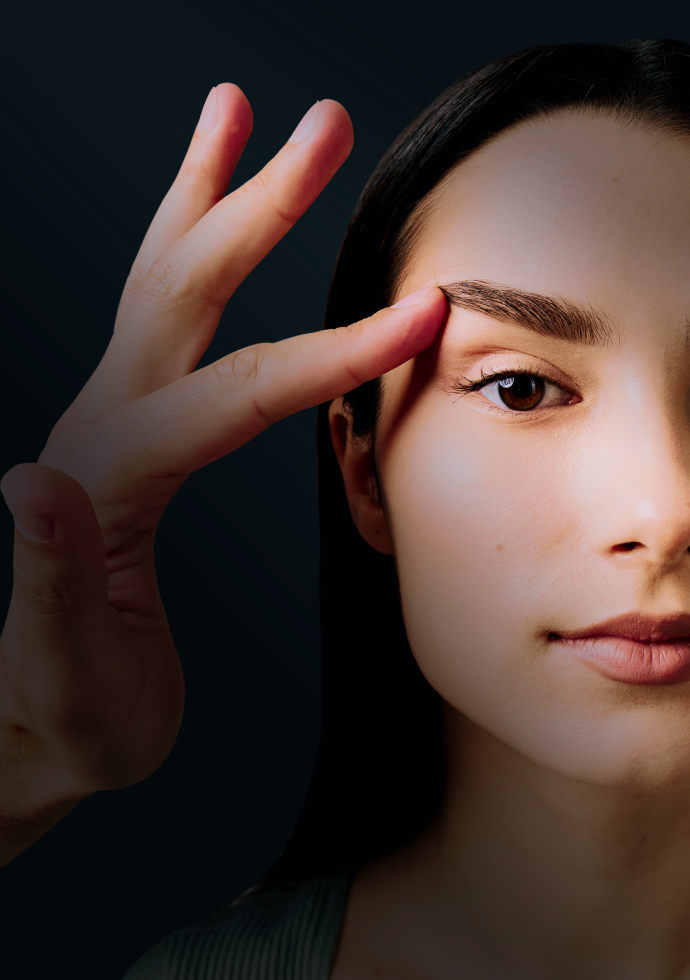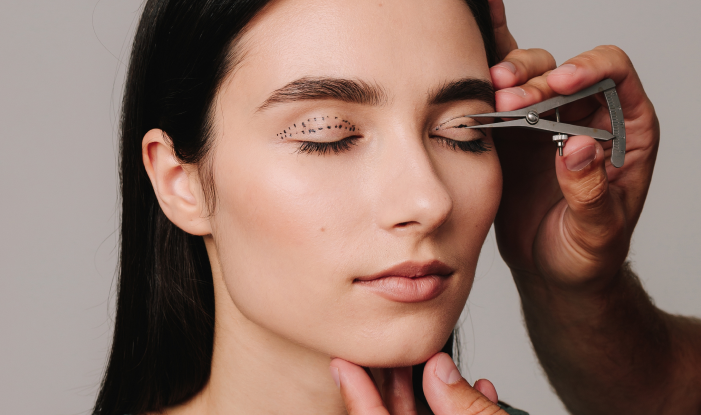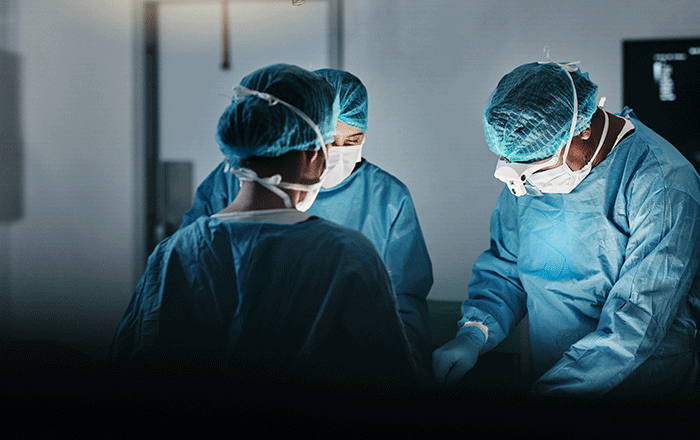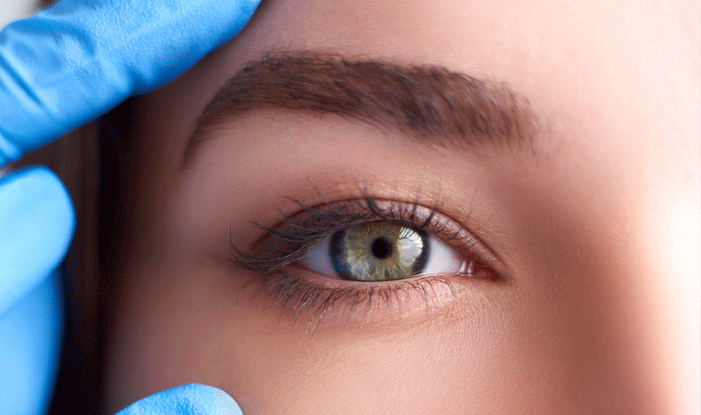Ptosis Surgery
Ptosis Surgery (Droopy Eyelid) in Singapore
If your eyes often appear tired or your upper eyelids seem to droop over your pupils, you may be experiencing ptosis—a condition where the upper eyelid falls lower than normal. Ptosis can affect both appearance and vision, but with modern surgical techniques, it can be safely and effectively corrected. Ptosis surgery, also known as droopy eyelid correction, is a specialised procedure that restores clear vision and a more youthful, alert appearance.
Medically Reviewed by Dr Colin Tham
Consultant Plastic & Reconstructive Surgeon
MB ChB (Aberdeen), FRCS (Ireland), FAMS

What Is Ptosis (Droopy Eyelid)?
Ptosis is a medical condition that describes the drooping of the upper eyelid. Ptosis might affect one or both of our eyes. Ptosis results in patients having a constant “sleepy” or “drowsy” look to their faces, giving the impression that they are always tired or disinterested. Patients suffering from moderately severe ptosis would also experience that their field of vision is partially blocked or obstructed due to the drooping eyelid.
What Are the Types of Ptosis?
Ptosis can be congenital or acquired, depending on when it develops.
Congenital Ptosis
Present at birth, caused by improper development of the levator muscle, which lifts the eyelid.Acquired Ptosis:
Develops in adults and can be further categorised into:.
Aponeurotic
The most common type, caused by age-related stretching or detachment of the levator aponeurosis.Traumatic
Due to injury that damages the eyelid muscle or its supporting structures.Neurogenic
Caused by nerve dysfunction affecting the muscles that lift the eyelid (e.g., Horner's syndrome).Myogenic
Results from muscle disease or disorders like myasthenia gravis.Mechanical
Occurs when excessive weight (e.g., contact lens or chalazion) pulls the eyelid down.
How Is Ptosis Diagnosed?
Diagnosing ptosis typically involves an assessment of medical history and physical examination to assess the severity and cause of the eyelid droop. In addition, a comprehensive eye exam may be done, which may include tests like:
The Marginal Reflex Distance (MRD)
This is a measurement used to assess the degree of eyelid drooping or ptosis. It measures the distance between the centre of the pupil and the upper eyelid margin.Levator Function Test
This measurement helps determine the severity of ptosis and guides the choice of surgical technique. During the test, the doctor holds the patient's eyebrow to prevent the frontalis muscle (the muscle that raises the eyebrows) from assisting in eyelid elevation. The patient then looks upward, and the distance the eyelid moves is measured.
What Is Ptosis Correction Surgery (Droopy Eyelid Correction)?
Ptosis correction surgery is a procedure designed to lift a drooping eyelid. It is particularly recommended for adults and children whose vision is impaired by ptosis.
The aim of ptosis surgery would be to increase and permit a full view of vision by elevating the upper eyelid while aiming for a reasonable amount of symmetry for both eyes. This could be achieved by tightening the levator muscle and also by removing excess fat and tissue in the affected eyelids.
What Are the Benefits of Ptosis Surgery?
Patients who undergo ptosis correction often experience multiple improvements, including:
- Enhanced field of vision by lifting drooping eyelids
- A more alert and youthful appearance
- Improved symmetry between both eyes
- Reduction in eye fatigue, especially during reading or prolonged computer use
- Boosted self-confidence and facial harmony
Whether done for medical necessity or aesthetic refinement, ptosis surgery delivers functional and cosmetic benefits that can significantly enhance quality of life.
What Are the Types of Ptosis Correction Procedures?
Ptosis correction surgery aims to address droopy eyelids by adjusting the muscles or tissues responsible for eyelid elevation. The specific surgical approach depends on the severity and underlying cause of ptosis.
External Method
This method is suitable when the levator muscle is still functional. The levator aponeurosis (the tendon-like extension of the levator muscle) is repositioned or tightened to restore its ability to lift the eyelid. This approach is usually done through an incision in the eyelid crease, and adjustments to eyelid height may be made during surgery to ensure optimal results.
Internal Method
Internal techniques are ideal for patients with mild ptosis and where minimal external scarring is preferred. This method is used to remove a small portion of Müller's muscle or the tarsus (the cartilage of the eyelid) to improve eyelid elevation. It is done through an incision on the inside of the eyelid, leaving no visible external scars.
Frontalis Suspension
Typically reserved for severe congenital ptosis or cases where the levator muscle is not functioning well, this procedure involves connecting the eyelid to the frontalis muscle (the forehead muscle) using a sling. The sling can be made from the patient's own tissue (such as fascia from the thigh), from a donor, or from synthetic materials. The frontalis muscle helps to lift the eyelid when the patient raises their eyebrows. With ptosis correction, drooping eyelids can be carefully tightened, resulting in greatly improved appearance and vision.
What to Expect Before, During and After Ptosis Surgery?

Pre-surgery
A comprehensive evaluation, including a measurement of the marginal reflex distance (MRD), will determine your candidacy for ptosis correction surgery. Suitable candidates typically have droopy eyelids that significantly impair their vision.

During Ptosis Surgery
The eyelid surgery is conducted under local anaesthesia and usually takes about 1 to 2 hours to complete. An incision will be made within or outside the eyelid crease to perform the surgery. Both eyelids can be operated on at the same time. After the desired correction is achieved, the incision is closed with sutures or surgical glue.

Post-surgery and Recovery
After the surgery, the eyelid that was operated on will be swollen. This typically subsides within 1 to 2 weeks. Medications will be prescribed to reduce swelling and minimise bruising. There may also be excess tearing causing temporary blurring of vision.
While the procedure is typically performed on an outpatient basis, it is recommended to rest for a few days after surgery. Regular follow-up appointments with your ptosis surgeon are essential to monitor your progress and address any potential complications.
Potential Risks and Complications of Ptosis Surgery
While ptosis surgery is generally safe and effective, it is important to be aware of potential risks. Common temporary side effects include swelling, bruising, and temporary vision changes.
In rare cases, more serious complications may arise, such as overcorrection, under-correction, scarring, infection, or difficulty closing the eyelids. To minimise these risks, it is crucial to choose a qualified and experienced ptosis surgeon who can tailor the procedure to your specific needs.
Frequently Asked Questions
In most cases, the results of ptosis surgery are long-lasting. However, like any surgical procedure, there is a small chance of needing revision surgery.
Patience is crucial during the initial recovery period, as swelling can temporarily affect the appearance of the eyelids. Once the swelling subsides, you can better assess the final outcome.
Mild cases of ptosis may be managed with non-surgical methods like prescription eye drops or ptosis crutches. However, these non-surgical options can only provide temporary relief as they may not address the underlying cause of the eyelid droop.
Surgery is often the most effective treatment for more severe cases and for long-lasting results.

Ptosis Surgeon in Singapore
Dr Colin Tham
Consultant Plastic & Cosmetic Surgeon MB ChB (Aberdeen), FRCS (Ireland), FAMS
Dr Colin Tham is an experienced plastic surgeon skilled in performing ptosis correction surgery, also known as droopy eyelid surgery. He is accredited by the Ministry of Health in Singapore and has over 20 years of experience in the field. Dr Tham received extensive plastic surgery training in Scotland, Taiwan, and Singapore; and is committed to providing beautiful and natural-looking outcomes for all his patients.
